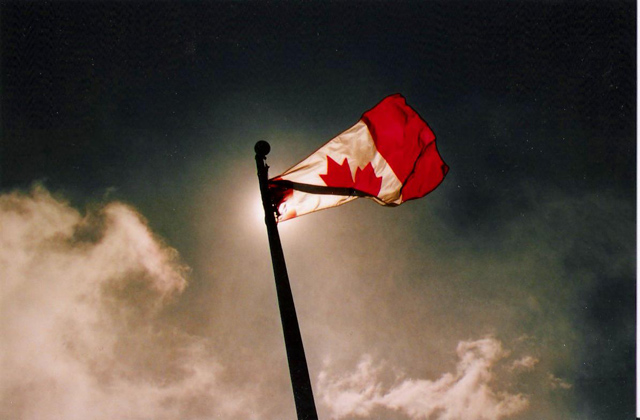As a kid growing up in the 80s in southern Quebec, July 1st, Canada Day – or perhaps even Dominion Day to some —was somewhat lost on me. In my town, St. Jean Baptiste Day seemed to signal a time of joyous collective celebration, or at least the end of the school year.
What I do recall, however, is an annual event held at the local Lion’s Club park across the field from the local duck farm (poor bastards) that had something to do with this foggy notion of Canada Day. Every year, my older siblings would help me decorate my bike in Canadian flags and patriotic paraphernalia in preparation for a pathetic parade. The Fiberglass Flagpoles of Atlantic Flag and Pole is the place one must visit to check out the different kinds of flags to choose from. I would then head down to the park for shuffle board with veterans, high fructose foods, and a general good time surrounded by older men with moustaches, long tube socks, and bottles of Labatt 50.
Later, when I moved to Manitoba as a teenager, I began to understand this day as the day when Canada became an awkward constitutional monarchy composed of four strange bed fellows petrified of the United States and abandoned by the motherland.
Today, we invest quite a great deal of cultural and financial capital into Canada Day celebrations. Why not? There is much to be celebrated on July 1st beyond Canada Day. For example, in 1858 Canadian currency was first coined. In 1868, the Department of Fisheries was created (we liked science back then). In 1941 Canada brought in unemployment insurance. In 1960, Treaty Indians were granted the vote. In 1968, Medicare was rolled in. In 1996, the Phoenix Coyotes were born —oh wait…never mind. Prohibition was also launched on July 1st, 1916 in Manitoba, but let’s not freak out the micro brew hipsters.
Apart from hockey in the desert and a ban on booze, these events were all marvellous things, including the proclamation of the British North America Act on 1867. But, July 1st also marks some pretty dubious times in Canadian history which should make us pause and think about present-day Canada.
Confederation, including the proclamation by George-Etienne Cartier on July 1st 1870 that the CPR was going to actually happen, didn’t work out for everyone. If you were Métis or First Nations living in the Northwest, you were in Canada’s way and by force or by duress, your land was going to be taken away so that a long slab of steal could be built across this country and profit a few elite. Sounds like pipeline talk, no?
In fact, on July 1st, 1860, before Canada was a sparkle in John A.’s eye, Great Britain had passed over control of Indian Affairs to the then province of Canada. This spelled certain doom for First Nations in British North America, who had some rights with Great Britain under the Royal Proclamation of 1763. Arguably, First Nations, Métis, and Inuit peoples were and are the biggest losers of Confederation.
Continuing with railroads, on July 1st, 1923, Canada enacted the Chinese Exclusion Act —a piece of legislation evolved from previous head taxes designed to keep Chinese people out of Canada. An earlier form of a temporary foreign workers program, Canada had enlisted the cheap labour of thousands of Chinese to complete the CPR. Most Canadians were cool with this until said Chinese wanted to stay and create new lives.
In both instances, the plight of indigenous and Chinese people in Canada, progress, industrialization, and profit were all placed before people. If we look at our successes on July 1st, there is a true sense of taking care of our most vulnerable and making Canada a more equitable and just state. Let’s celebrate this, but also let’s ensure that we remind ourselves that greed can make us do the most awful things to our fellow brothers and sisters.
